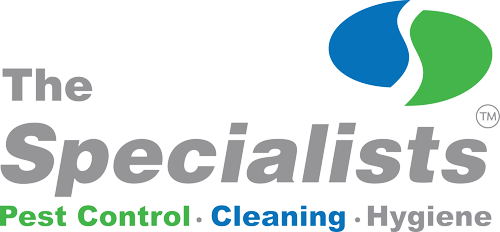 A well-structured and properly executed cleaning and sanitation regimen is of utmost importance for any food-related enterprise, spanning from eateries and catering services to retail food establishments, production sites, and logistical operations. Neglecting or inadequately performing cleaning protocols that deviate from food safety regulations could result in severe repercussions. Beyond tarnishing the business’s reputation, it might also contribute to outbreaks of foodborne illnesses.
A well-structured and properly executed cleaning and sanitation regimen is of utmost importance for any food-related enterprise, spanning from eateries and catering services to retail food establishments, production sites, and logistical operations. Neglecting or inadequately performing cleaning protocols that deviate from food safety regulations could result in severe repercussions. Beyond tarnishing the business’s reputation, it might also contribute to outbreaks of foodborne illnesses.
The Significance of Cleaning and Sanitisation
Cleaning entails the removal of dirt, debris, and organic matter, while sanitisation involves eradicating microorganisms and bacteria in a manner that upholds food safety standards. Both actions play a vital role in:
1. Eliminating disease-causing agents (pathogens).
2. Preventing infestations of pests like rodents, insects, and birds. Thorough cleaning and sanitisation eliminate food remnants that sustain pests and remove pathogens these pests might have introduced.
3. Minimising the risk of cross-contamination from pathogens. For instance, preventing the indirect transfer of bacteria causing food poisoning from raw foods to ready-to-eat items.
4. Reducing the possibility of allergen-related food contamination, such as from nuts or seeds.
5. Mitigating the risk of physical impurities entering consumable food items, like dirt, hair, or residue from packaging materials.
6. Diminishing the chances of accidents, like slipping on spills or food waste.
7. Establishing a pleasant and hygienic work environment.
8. Adhering to food hygiene regulations.
Components of a Comprehensive Cleaning and Sanitisation Strategy
A well-structured Food Safety Plan should outline specific guidelines for cleaning and sanitisation in accordance with HACCP (Hazard Analysis and Critical Control Points) and GMP (Good Manufacturing Practices) standards. This should encompass:
1. Identification of areas requiring cleaning.
2. Selection of appropriate cleaning materials.
3. Determination of cleaning frequency.
4. Specification of the cleaning methodology to be employed.
5. Defining the expected cleaning standard.
6. Outlining safety precautions.
7. Designation of individuals responsible for cleaning tasks.
8. Monitoring and recording the cleaning procedures, including validation of effectiveness.
Potential Challenges and Pitfalls
The effectiveness of a cleaning and sanitisation schedule hinges on its meticulous implementation. Just as improper cleaning can compromise food safety, inadequate cleaning can imperil both the safety of food and the well-being of staff and patrons. Common challenges include:
1. Contamination of food through cleaning equipment (e.g., brushes, cloths).
2. Microbial contamination from uncleaned cleaning tools, potentially spreading pathogens.
3. Overlooking the sequence of cleaning or utilisng the same equipment for diverse tasks, leads to pathogen transfer.
4. Chemical contamination due to incomplete rinsing, improper chemical concentrations, or unsafe chemical storage.
5. Failure of personnel to use appropriate personal protective gear while cleaning.
6. Ineffectiveness of disinfection procedures, stemming from incorrect chemical dilution, insufficient contact time, inadequate cleaning before disinfection, or unsuitable disinfectant selection.
7. Slips and accidents due to wet surfaces.
8. Insufficient cleaning and sanitisation of equipment due to untrained staff. Systems like “cleaning in place” need careful design to ensure chemicals access all areas.
In summary, meticulous planning and execution of cleaning and sanitation routines are essential for any food establishment. Neglecting these procedures could lead to dire consequences, underscoring the need for well-defined protocols and ongoing staff training to maintain high food safety standards.

